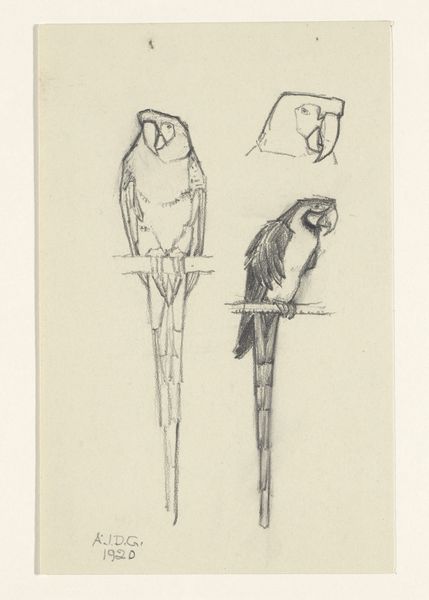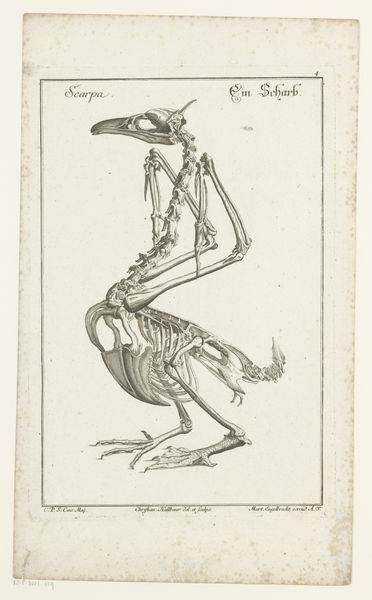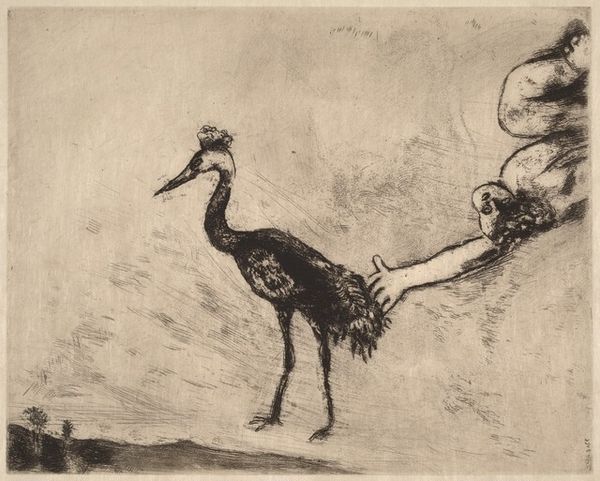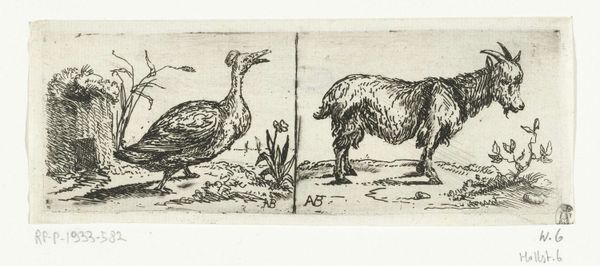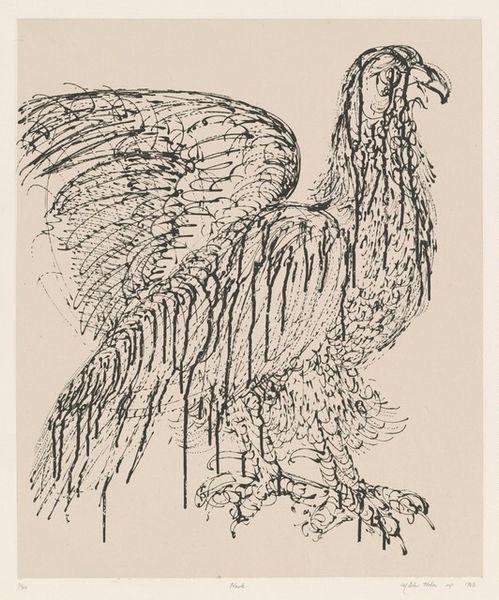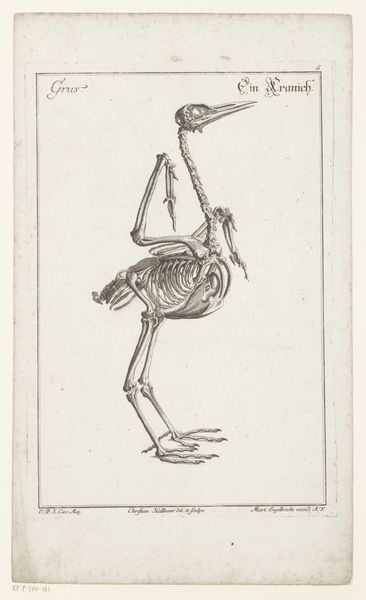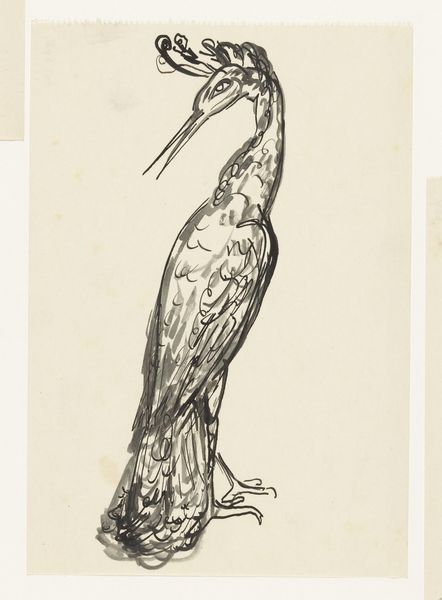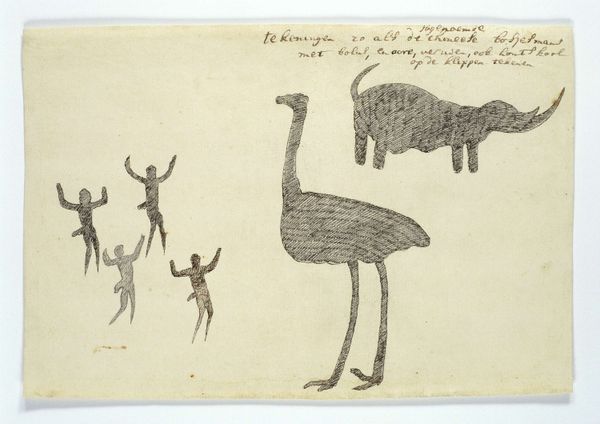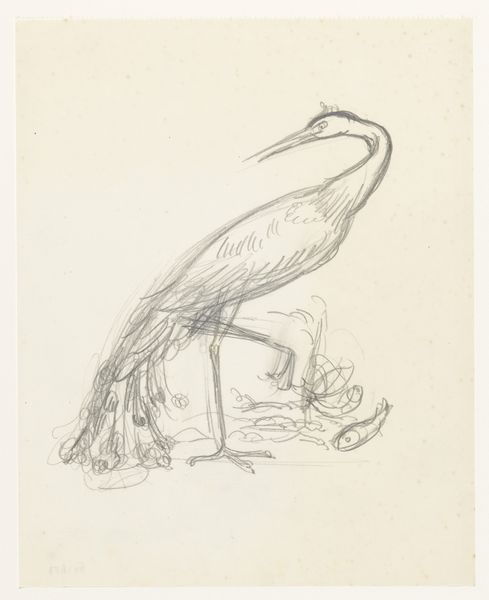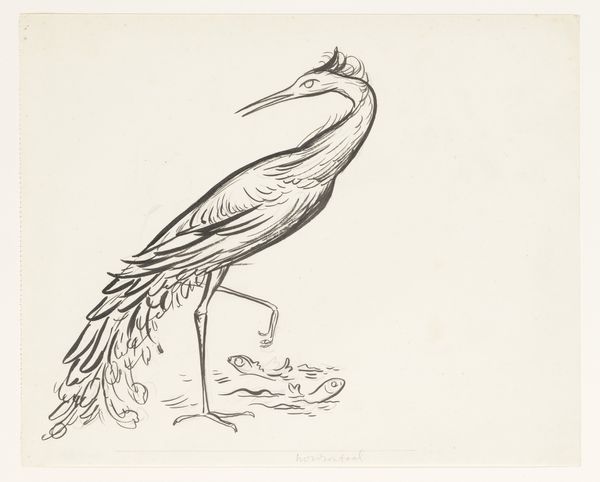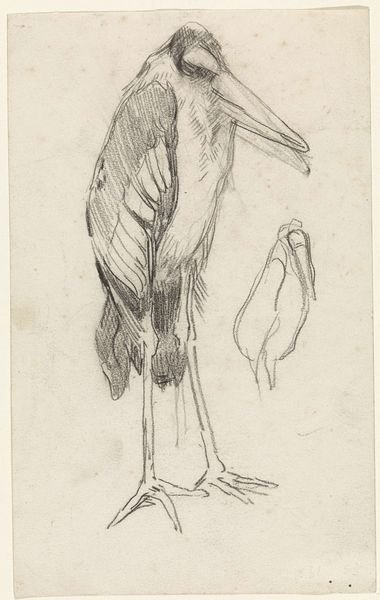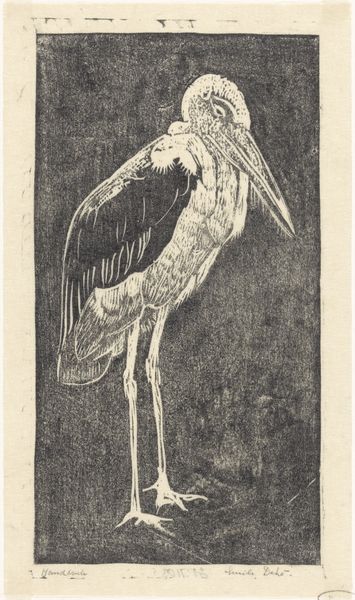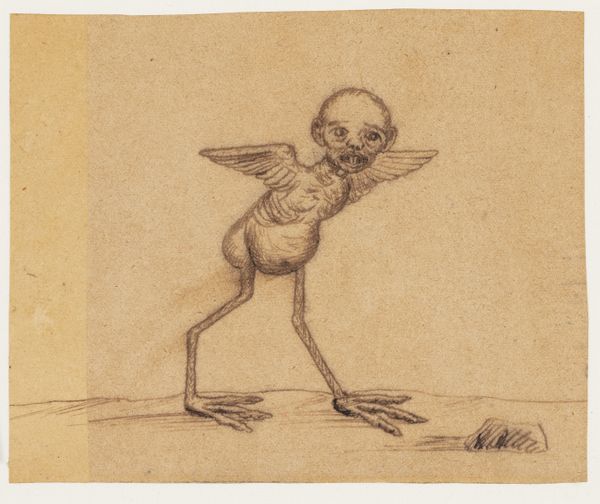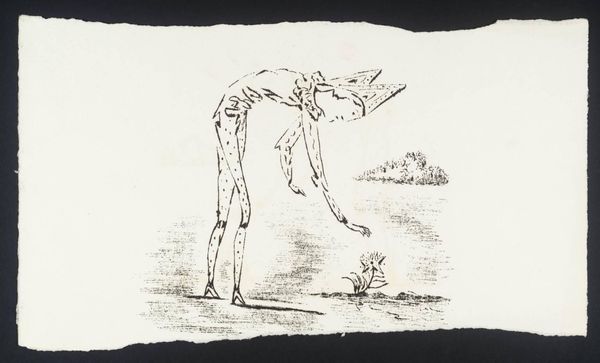
Dimensions: image: 251 x 178 mm
Copyright: © Tate | CC-BY-NC-ND 4.0 DEED, Photo: Tate
Curator: Cecil Collins' etching, "Fool and Bird," presents a skeletal figure alongside a bird, rendered in delicate lines. It's part of the Tate collection. Editor: Striking! It's immediately unsettling; the figure looks fragile, almost puppet-like, with an ethereal yet haunting quality. Curator: Collins was deeply interested in Romanticism, seeing the Fool as a symbol of spiritual insight in a materialist world. The bird, often, represents freedom. Editor: Interesting. The composition feels very deliberate in its awkwardness. Considering how fools are often those at the margins, the bird might represent the fool's awareness of their alienation. Curator: The social role of the fool has been a tool for criticism throughout history, offering commentary on power structures. Collins saw the fool as outside of those structures entirely. Editor: Indeed. While it's tempting to frame this within simplistic binaries, such as fool vs. wise or freedom vs. constraint, I see a more complex interplay, inviting us to confront our own limitations and possibilities. Curator: Reflecting on this, I see how Collins wanted to suggest that what appears foolish to the world might, in fact, be a deeper truth. Editor: For me, it's a reminder to embrace vulnerability and question the norms that confine us.
